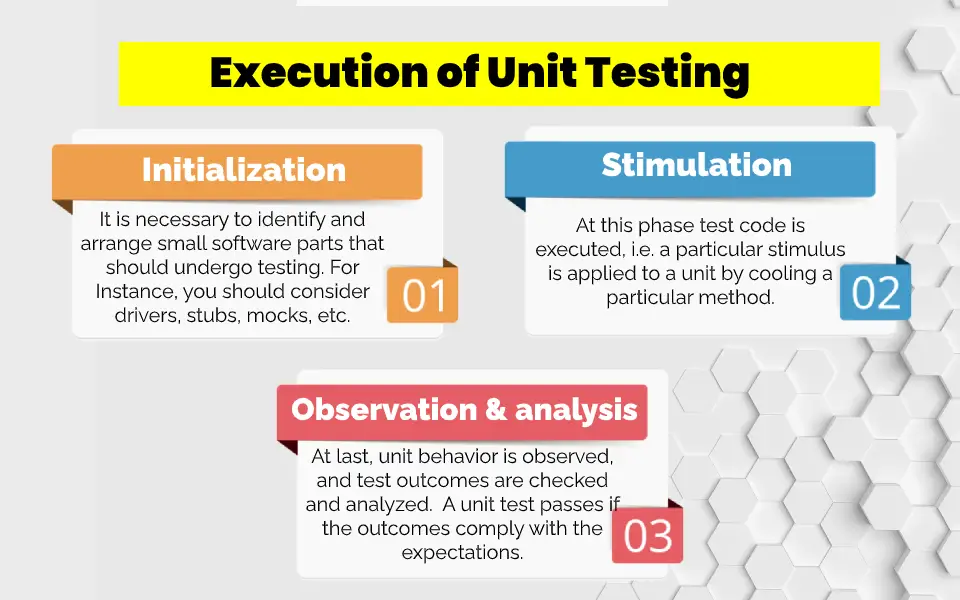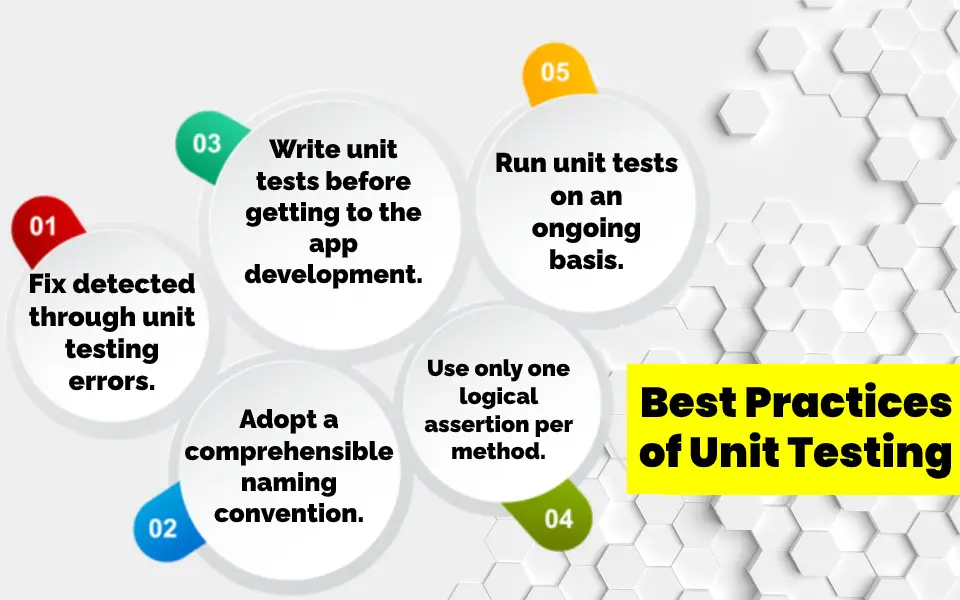14 minutes to read
Unit Testing. Start Unit Testing Now With Our Tutorial


Chief Executive Officer
Share
Facing the necessity to execute unit testing for the first time, one can have a great number of questions. What is unit testing? How to write unit tests? Is it indeed important to carry out unit tests? Which unit testing tutorials to review? This list of questions can be endless. Still, there is no issue for concern - this article provides answers to all your questions.
What is Unit Testing?
We offer to start from the basics and define unit testing. So, unit testing is an initial level of software testing at which individual code components or units are checked independently from each other to ensure their correct function.
Who Should Execute Unit Testing?
As long as unit testing verifies individual code units, it is usually executed at the development phase by the developers. Still, in exceptional circumstances, it also can be executed by QA engineers on the condition that they have excelled at the white-box testing technique.
Advantages of Unit Testing
It is not an accident that unit testing is considered to be a helpful practice. There are many reasons for this, and below you can find key advantages of unit testing:
Unit Testing Disadvantages
So you have made sure that unit testing has multiple advantages. However, there are lees to every wine. So, below you can also see some of its drawbacks. However, these are not disadvantages but rather restrictions:
Execution of Unit Testing

Unit tests are automated tests designed by developers to check if each code unit is functional. So usage of the white-box testing technique is required for its execution. In different situations, a module, function, procedure, or individual method can stand for a unit.
Bugs detected through unit testing are eliminated at once and are not tracked or reported.
Generally, developers execute unit testing in a few steps:
Initialization
Firstly, it is necessary to identify and arrange small software parts that should undergo testing, Besides it is important to arrange required preconditions for the test execution. For Instance, you should consider drivers, stubs, mocks, etc.
Stimulation
At this phase test code is executed, i.e. a particular stimulus is applied to a unit by cooling a particular method.
Observation and analysis
At last, unit behavior is observed, and test outcomes are checked and analyzed. A unit test passes if the outcomes comply with the expectations.
The above-mentioned steps of unit testing execution are known among developers as the AAA strategy or Arrange, Act, and Assert, which stand for corresponding execution steps.
Unit Test vs. Integration Test
As long as we have a goal to examine unit testing in-depth, it is also worth highlighting its difference from integration testing.
| Unit Testing | Integration Testing |
|---|---|
| Focuses on every single code unit. | Focuses on interrelations between integrated code units. |
| Test execution is rather quick. | Test execution can be rather time-incentive. |
| It does not consider any external dependencies and interrelations. | It considers interactions with external dependencies like databases or web servers. |
| Executed by a development team. | Executed by a QA team. |
| Uses the white box testing technique. | Uses the black-box testing technique. |
| Test maintenance is cheap. | Test maintenance is rather expensive. |
| It is executed in the initial phase of the QA procedure and then rerun wherever it is needed. | It is executed after unit testing and before system testing. |
| It is easy to identify bugs and their causes. | It can be rather challenging to identify bugs and especially their root causes. |
A mix of unit tests and integration tests verifies if each taken separately unit functions in a proper way and that all these code units work nicely after integration, giving confidence in the excellent performance of the whole system.
Common Unit Testing Myths
Although unit testing has become a common practice and proved its efficiency, there are still some myths related to it that we would like to dispel.
Unit testing is a time-waster
Taking into account the hectic pace of modern life, there is always a temptation to reduce work scope to meet deadlines. So unit testing can be sometimes considered as an unnecessary activity that squanders valuable time. However, this approach is not effective. Neglecting unit testing, a development team will have to waste more time due to:
A wish to avoid unit testing is easily understandable, but many developers reveal its numerous benefits once they complete at least one project using unit testing. Once designed unit tests can be rerun as often as needed. In such a way, initial time investments are justified in the long term .
Unit testing is difficult
Of course, unit test design requires particular knowledge and skills but it is not rocket science at all. Besides, modern unit testing tools significantly boost this process. Moreover, most of them, including JUnit, NUnit, and PHPUnit, provide the same functionality and methods. So if you have ever designed a unit test suite using one framework, most likely you will have no problems with using others.
Unit testing is time-incentive
This myth is one of the most widely spread. Many developers who have never dealt with unit testing tend to avoid it due to a lack of time. But it is a fallacy. As a matter of fact, unit tests help save time.
When a bug appears in a code, it can take a ton of time to figure out its root cause. You lose valuable time investigating chunks of code. In contrast, with unit tests, you can be confident in a proper app functioning, and even if something works wrongly, you can find out a problem fast and easily.
One more thing that is worth being mentioned is that there is no need to rerun all existing unit tests. You can verify just particular code units executing corresponding unit tests.
Therefore, unit testing in no way slows down the software development, but on the contrary helps save time, identifying defects before the development process runs too far.
Unit testing does not provide efficient debugging
It is nonsense. Unit testing considerably simplifies debugging because a developer can focus specifically on a problematic code unit, fix it, and integrate it one more time. Of course, unit testing cannot be a 100% guarantee against defects; yet, it is a great way to decrease instances. Devotees of unit testing note that it makes debugging indeed easier.
High code coverage is a guarantee of quality
High code coverage is traditionally considered to be a sign of better code quality. In essence, it cannot accurately define the quality of code. Moreover, too ambitious goals in relation to code coverage can be fairly counterproductive. So, instead of focusing on test coverage, spend more time analyzing if the critical parts of code have been tested, and check the quality of executed unit tests.
Best Practices of Unit Testing

If you want to achieve great results, it is necessary to stick to proven practices. Here are some of them:
Top Unit Testing Tools

Unit testing tools significantly simplify and boost developers’ work by indicating and reporting the failed test and pausing the corresponding testing.
On the market, there are a plethora of tools for unit test automation. Let’s have a look at some of them:
Takeaway
The importance of unit testing is often underestimated. As a result, some teams tend to omit it in an attempt to save some time. Still, it is the wrong approach. This unit tests tutorial provides a clear unit testing definition, advantages and disadvantages of unit testing, its execution, and myths related to it. All in all, we hope you have managed to grasp a unit testing meaning. Once created, unit tests can be rerun whenever it is needed to verify the function of each code unit in isolation. Thanks to unit testing, bugs can be easily revealed at the development stage giving an opportunity to save a good deal of money and time. Although unit testing cannot address all issues, it makes developers’ and QA engineers’ lives much easier.
Share
